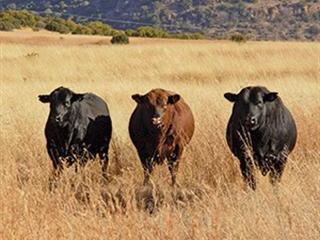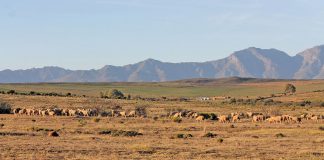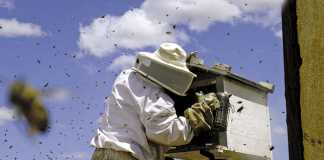
People have long used various parts of the animal carcass to provide food, clothing, furniture, equipment, instruments and even weapons. The introduction of intensive animal production, rendering, and other processes has made it possible for animal carcass products to be used in pharmaceuticals, cosmetics and household and industrial goods. Growing interest in and demand for the fifth quarter offers opportunities to increase total carcass value.
Rising affluence in developing countries, particularly China, which prefer consumable fifth quarter products, increases the demand for and value of these products. As demand for convenient and cheaper processed meat products increases in developed countries, carcass value is shifting from prime meat cuts to processing cuts and fifth quarter products. Rabobank believes this shift creates opportunities for meat processors.

Albert Vernooij
Making the most of carcass value
The dressed carcass is the four quarters of the animal, after slaughter, that contain the main cuts of both prime and processing meat. The dressed carcass makes up about 60% of the liveweight of cattle and two-thirds of the liveweight of pigs (see Figures 1 and 2). The remaining liveweight is taken up by the hide, blood, bones, intestines/casings, fat and organs known as the fifth quarter.

The demand for prime cuts, processing cuts and fifth quarter products differs from country to country, depending on traditions, culture, religion and wealth. In France and Ireland, by-products are an important part of the total meat consumption and in the Far East many fifth quarter products are considered delicacies. In Japan, beef tongue is a delicacy for which Japanese people are prepared to pay, but in the US and EU it is rarely consumed. Beef tongue in Japan traded for prices comparable to high quality beef cuts in the US.
In China, price differences are sharper, with liver, kidney and tail prices approximately five times higher than in the US in 2011. The differences in the value of these products on different markets creates arbitrage opportunities. The challenge for abattoirs is to optimise the value of the different products. Slaughterhouses have the opportunity to process different cuts into pre-packed, ready-to-eat products, increasing sales value but requiring investment in machinery and labour.
Is carcass valuation reversing?
A slaughtered animal’s value is the combined sales price of all the meat cuts and fifth quarter products. The prime meat cuts, which are mainly intended for fresh meat sales or further processing into high quality products, have the highest sales prices and value. Cuts intended for further processing, and the fifth quarter, have a lower share of total carcass value because of their lower contribution to carcass weight and their perceived lower quality in many countries.
This general weighting of the animal carcass began to change slowly in the first few years of this century, with a more rapid increase from 2009 in the US and the EU (see Figures 3 and 4). Since then, the price of less important pork cuts in the total carcass valuation in the US and the EU has risen faster than the average carcass value. In all important beef and pork exporting countries, the export price of by-products has risen significantly since 2000, especially so in more recent years (see Figure 5).


This is particularly apparent for pork, where by-product prices doubled between 2003 and 2011. For beef, the impact of the economic crisis on the demand for hides slowed the increase in 2009. This was followed by an upswing from 2010 on the back of strong demand for luxury cars with leather seats in Asia, and the declining global availability of cattle for slaughter.

Understanding carcass valuation
Prime cuts are considered bland by Asian consumers and many traditional Asian dishes use strong-tasting fifth quarter products. With Asian consumers moving from grain-based to animal protein-based diets as living standards rise, demand for animal by-products is growing rapidly. China’s fast expanding fifth quarter pork products import market is evidence of this (see Figure 6).

The economic slowdown which began in 2008 is still impacting on the global economy, causing consumers to trade down to cheaper products, including processed products. For example, fresh pork consumption fell by 7,2% in western Europe between 2006 and 2011, while the consumption of processed products increased by 0,8% during the same period. Consumers perceive processed products to offer better value, resulting in upward pressure on prices of processing cuts and by-products that go into their production.
Higher demand for processing meat cuts is strengthened by ongoing demand for convenience products. The convenience sector’s growth is driven by the same characteristics worldwide; more women entering the workforce, consumers with less time to cook, snacking and the introduction of specific fast food products from different cuisines. Improved processing technologies and increasing knowledge of the benefits of animal by-products is also contributing to increased use of fifth quarter products.
The growing popularity of heparin, an anti-coagulant produced from mucus collected from the inside of intestines, is an example. Demand for heparin in an ageing global population is growing. Further research and development could mean other valuable products emerging from animal by-products.
Sow populations have declined due to cyclical factors and productivity gains (see Figure 7). Sow meat, with a higher fat content, is mainly used in processed products. The decline in the number of slaughtered sows has caused processed meat producers to source their raw material from market hogs, resulting in higher demand and prices for the higher fat content cuts.

Permanent shift
Historically, the direct consumption of animal by-products has declined with increasing wealth as consumers can afford higher-priced prime meat cuts. This implies that the proportion of fifth quarter products for direct human consumption in countries with a high GDP per capita is lower than in countries with a lower GDP per capita and has a lower share in the total carcass valuation.
In emerging economies, consumers generally cannot afford the more expensive cuts, resulting in increased demand for less expensive cuts. Based on this, predictions should show that consumption of animal by-products in Asia should start to slow somewhere in the coming decade. Combined with the expected ‘trading-up’ once the economic crisis begins to fade, this should lead to declining consumption of animal by-products.
However, the examples of the popularity of beef tongue in Japan and the high consumption of by-products in France, both developed countries with very high GDP per capita, shows that animal by-products will hold their share on many consumer plates. With many animal by-products considered a delicacy in Asia, strong demand for these products will continue in the long term, further supporting the shift in carcass valuation. This demand will be strengthened by the growing number of uses for fifth quarter products.
Prices for processing cuts will stay up because of sustained demand for convenience products and downward pressure on sow herd numbers. We believe the shift in carcass valuation will be permanent and will affect the business models of players in the meat industry.
Meat industry options
The impact of the shift in carcass valuation will differ for abattoirs, processors and dedicated companies active in different parts of the by-product industry. The focus of abattoirs will move towards capturing the value of fifth quarter products.
The further processing industry could be forced to change its raw material sourcing to other products or to enter into long-term supplier contracts to safeguard supply. Dedicated by-product processors may strengthen their positions in the value chain because of increasing competition.
Value adding in slaughtering
For the slaughter industry, the shift in carcass valuation will move attention to the gut room, the place where most fifth quarter products are collected, cleaned, selected and preserved before shipping. Optimising processes and reducing losses could easily increase the value of fifth quarter products. With improved selection and focus, a significant amount of category 3 and edible products can leave the slaughterhouse as category 1 by-products, thus generating a profit instead of a cost.
This was demonstrated by efforts in Scotland between 2008 and 2010 which focused on increasing the value of fifth quarter products for 36 slaughterhouses. Due to the increased focus on collection and selection of fifth quarter products, the volume available for human consumption has increased. This increase, combined with rising export demand and higher prices for these products, reduced costs and increased profitability, culminating in an annual benefit to the Scottish meat industry of approximately £15,5 million (almost US$25 million or just over R220 million).
Slaughterhouses can also add value in the processing of animal by-products. Possible options are to further cut and process the variety meats or to expand activities in rendering, casings, gelatine or products in demand by the pharmaceutical or cosmetic industries. This could also be accomplished via partnerships with companies already active in these industries. Increasing the processing of variety meats can be accommodated in the normal routine of the abattoir. Other possible opportunities are in rendering or new product creation.
The rendering market has potential as it is still relatively fragmented in many countries, especially in Asia with its rapidly modernising meat industry. Additionally, the average value of rendered by-products is estimated to have grown by a compound annual growth rate of about 10% in the last decade. Start-up activities in other uses like gelatine and casings will be more challenging. These global markets, especially in the case of gelatine, are consolidating and require relatively high investments.
Raw material
Rising competition and prices for processing meat cuts and animal by-products are impacting the sourcing positions of further processors. Higher prices might force these companies to source alternative cuts with different characteristics and qualities. If substitution of the raw material is not possible because of the impact on the quality of the final product, these companies can enter into long-term supplier contracts or build up dedicated supply chains. Other possible options include partnering with the suppliers, or backwards integrating into specific processors active in the collection of the raw material.
Strengthening position
The growing importance of animal by-products is clear from the increased attention of dedicated animal by-products companies. Until a few years ago, only a few products were collected from those offered in the gut room. However, this has changed in the last couple of years, with participants now collecting all gut room products. In line with this development, the first mergers and acquisitions transactions have begun, enabling companies to capture a higher share of fifth quarter products. This development is expected to continue. Additionally, competition in the gut room will increase due to slaughterhouses’ forward integrating.
Definitions
- Fifth quarter – The heart, liver, kidneys, tongue, stomach, skirt, tripe, intestine tail, embryonic fluids, horns, head, ears, glands etc. Source www.merriam-webster.com
- Arbitrage traders – traders who take advantage of price discrepancies for equivalent goods in different markets. Source http://oldfraser.lexi.net
Contact Albert Vernooij at [email protected]













